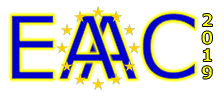Speakers
Description
The hybrid L|PWFA acceleration scheme combines laser- (LWFA) with plasma-wakefield acceleration (PWFA) to provide an ultra-compact, high-brightness electron source. Recently, the acceleration of a witness bunch using this hybrid scheme was demonstrated at HZDR. In this talk, we present recent start-to-end simulations, that accompanied the experimental campaign, and provided fundamental insights into the injection and acceleration process of this novel, compact accelerator. These accompanying simulations were performed using the 3D3V particle-in-cell code PIConGPU. A significantly enhanced agreement between theoretical predictions and experimental measurements could be achieved by resembling the experiment to a very high degree. Modeling the geometry, density distributions, laser modes, and gas dopings as measured in the experiments provided good comparability between experiment and simulation. With that degree of agreement, the wealth of information provided by the in-situ data analysis of PIConGPU provided insight into the plasma dynamics, otherwise inaccessible in experiments. The talk will not only focus on explaining the fundamental physical process behind this hybrid scheme but will further elaborate on the essential details that produce the quasi-monoenergetic witness bunches seen in experiment. Furthermore, we will discuss the associated challenges in maintaining numerical stability and experimental comparability of these long-duration simulations.

